Links are incredibly important to how the internet works, this includes internal links as well as external links. It’s also worth mentioning that links are a confirmed Google ranking factor, explaining why Google pays so much attention to the links coming to your site, coming from your site and the internal links between your pages.
In this guide, you’ll learn why internal link building can have an enormous impact leading to more organic traffic.
What are internal links?
An internal link is a hyperlink to another page in the same domain.
These links help users and search engine bots navigate between the pages of your website.
Internal links are super valuable for SEO as they help pass PageRank between the pages of your site.
Internal links usually have the following HTML structure:
<a href=”URL”>Anchor text</a>
Here’s the explanation of the elements:
- a: anchor tag is the HTML code to create links.
- href: the element containing the URL you want to link to.
- URL: the address of the page you want to link to.
- Anchor text: the text that someone must click to access a link.
When I link to the free keyword research tools guide on SEOTesting the HTML looks like this:
<a href=”https://seotesting.com/blog/free-keyword-research-tools/”>free keyword research tools</a>
Internal links vs external links
The main difference is that internal links direct users and search engine crawlers to another page in the same domain while external linking points to another website.
In SEO terms, internal links allow PageRank to flow between other pages of a site, while external links help increase the PageRank of the page on the receiving end – if the external link is dofollow.
This happens as backlinks (links from one site pointing to another) boost the authority of the site receiving the link.
In simple terms, Google sees links as votes.
The more links a page has, the more popular it’s considered.
As a rule of thumb, pages with more links rank higher in search results.
Another purpose of links is to give attribution when information is used from another source (internal or external).
Types of internal links
There are several types of internal links with a distinct SEO impact.
Body links (aka. contextual links, or editorial links) are the links within the page’s main content, including text and images.
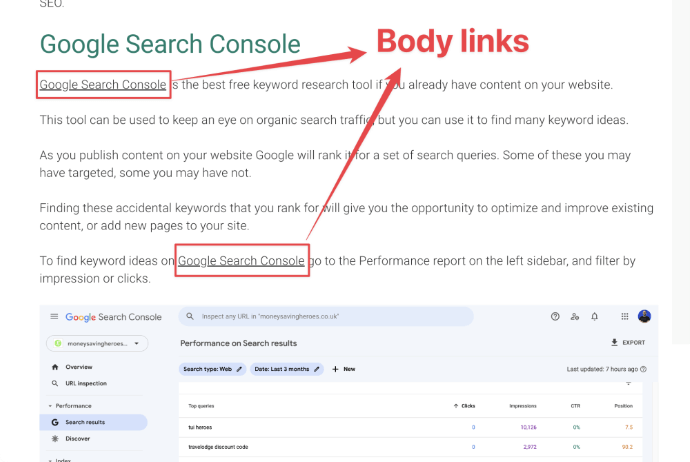
Navigation links are links from the site’s main menu – for example, the Blog link from our menu is a navigational link.
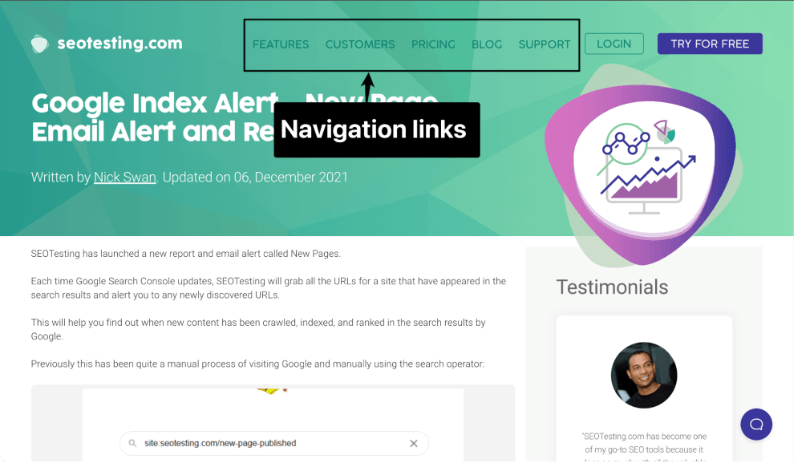
Breadcrumbs are links indicating the page’s location in the site hierarchy.
This can be helpful for users and crawlers to understand the website.
Pro tip: Follow Google guidelines when adding breadcrumbs structured data.
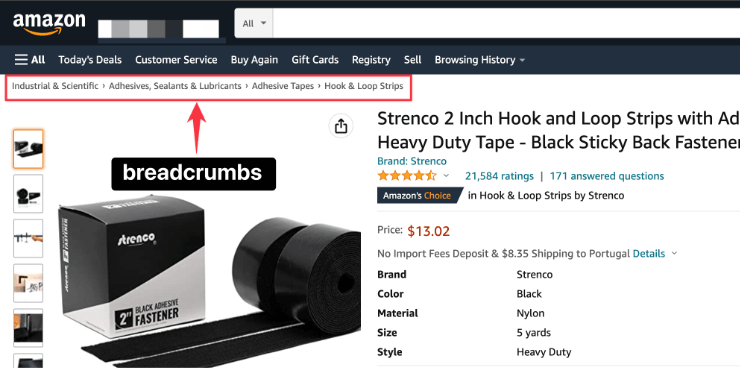
Footer links are the links at the very bottom of a page.
The footer usually contains pages relevant to the business that aren’t essential to navigation, hence not making the cut to the main menu – for example, a contact page, terms & conditions and privacy policies.

The SEO value of footer links is debatable, but the general feeling is that they don’t have much value.
In 2020 John Mueller said: “So with this specific situation, usually what happens here is we do focus on the primary content on the page. And that’s something that makes sense from a user point of view. If you have one page, then usually you focus on what is actually unique about this page, and you kind of ignore the rest. I mean, you still use it, but you primarily focus on the primary content”.
From my experience, footer links have some SEO value but aren’t essential, and there’s no evidence of them hurting a website when used with moderation.
On one of my sites, I have 1 article linked from the footer, and Google Search Console considers those as internal links.
As you can see, the article on the footer has 61 links, and the page with most internal links that is not on the footer has 10.
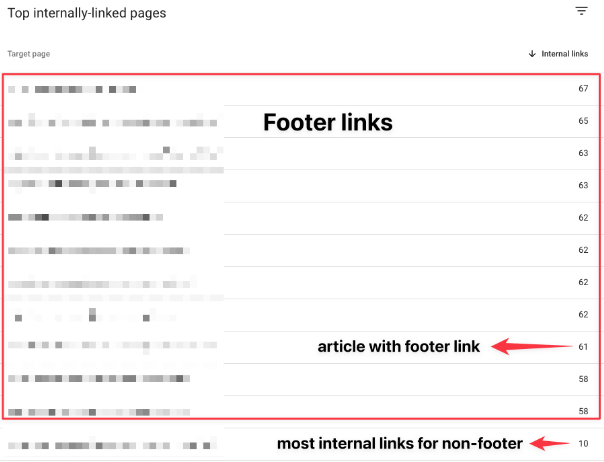
In the SaaS industry, it’s very common to see comparison pages in the footer.

These are pages with high relevance to these businesses, and footer links might give a little SEO boost and increase exposure.
Call to action links are the links included inside buttons, mainly from the sidebar or pop-up modals. The SEO value of these links is also lower than body links. This is partly down to the fact that, in some cases, they may not link to an indexed page on a website. Instead, it will link to a sign-up page for a trial, for example.
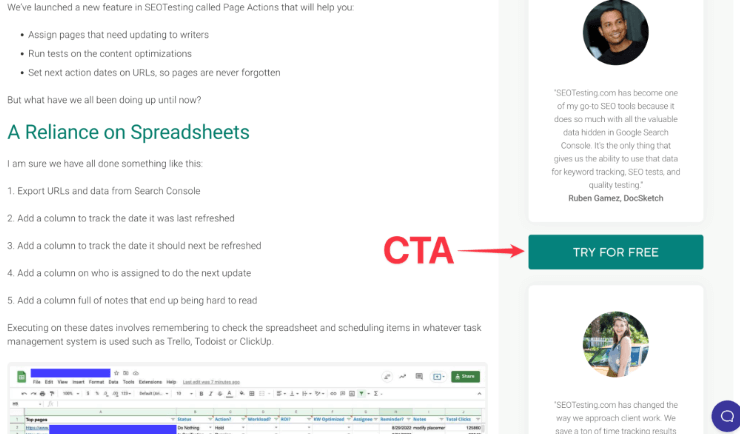
Why are internal links important to users
Internal links are like a map for people visiting a website.
Without them, it would be impossible to navigate your website without a direct link to a page.
Internal links also serve the purpose of giving context to the page you are linking to.
For example, when you see a link with the anchor “content optimization process”, you can be pretty sure that it will take you to a page about content optimization.
But when you see the anchor “click here”, you have no clue about what you are clicking on.
Anchor text matters, and Google says they should be descriptive.
Internal links help give attribution and cite information used from another page that further explains a topic.
You can see this on SEOTesting, where our redirects guide links to the guide about the most common questions about redirects.
Internal links are also used to break up long pieces of content into multiple blog posts.
The Anatomy of a SaaS Marketing Site is an example of that.
They transformed an ebook into 7 pages, which makes it easier to digest.
This technique is commonly known as the hub and spoke method, or making use of content clusters.
Why are internal links so important for SEO?
Links are still one of the most important things for SEO, including internal links.
Website structure
A well-defined website structure helps Google understand a site’s content and guarantees that all pages are linked to.
This way you avoid orphan pages as they are a big no-no for SEO!
An SEO-friendly structure makes PageRank flow between pages and can lead to better rankings.
This means the website’s internal links act as an organizational chart by grouping related pages.
Content hierarchy
The content hierarchy of a website resembles a pyramid with the home page at the top, followed by category or pillar pages, and posts at the bottom.
This organization makes the most important pages easier to access, and that’s why they tend to get more links.
That’s important for SEO as Google sees pages with more links as more important.
This applies to internal links as well and explains why they can have a positive impact on rankings.
I recommend you link back from pages lower on the site’s hierarchy to those on the higher levels, which can also reinforce the topical authority.
Context
The internal link anchor text hints to Google about what the page is about.
But they also consider the surrounding text to interpret the context of the page you are linking to.
That’s why, on top of having a descriptive anchor text, it’s a good idea to add a couple of sentences near the anchor text that help explain it.

Help resolve cannibalization issues
In SEO, keyword cannibalization happens when more than one page on the same site targets similar keywords.
Keyword cannibalization is a problem as it divides link equity, which tends to produce lower rankings.
Google sees the anchor text as hints about the contents of a page.
If you have multiple instances of the same anchor text (on a single page, or even across multiple pages), but you link to different pages on your site, you are potentially sending mixed signals to Google as to which page is the topical authority for the keyword in the anchor text.
Linking to a single page whenever the anchor text is relevant to that page, will help avoid keyword cannibalization.

How Google uses internal links
Google uses links for ranking, discovering, and navigating sites.
If a page has backlinks, they’ll be able to find and crawl it – unless blocked by robots.txt.
But if a page isn’t linked from anywhere, it’s called an orphan page.
These pages are basically invisible to Google, unless mentioned in the sitemap.
Because of this, orphan pages are harder to rank.
Google is more likely to think a page is irrelevant if it has no internal links.
If the page was important, it surely would be linked from somewhere.
Therefore, internal links are crucial for Google.
Doing a good job at linking all the pages on the site helps Google understand the connection between them.
This massively improves the chances of your site ranking well and makes things clearer.
How internal linking helps build topic clusters and silos
Website hierarchy and content silos are hot topics of discussion in the SEO industry.
A content silo is a way to organize, isolate, and internal link pages about a specific topic.
As a result, content is divided into sections that only have internal links to pages inside the same silo.

This method is considered beneficial for SEO because it only links to closely related pages and stops PageRank being lost to pages that are not related to the topic at hand.
It’s also believed that this is good for internal linking as the pages of each silo link to several, or all, pages in the same silo, guaranteeing they all receive links.
But content silos are a terrible idea from a user and SEO perspective.
The biggest problem is that siloing doesn’t allow a natural internal linking process on the site.
This is especially bad because it’s normal to link to different sections of the same website.
Imagine you have a gardening website separated into 3 silos: plants, guides, and tools.
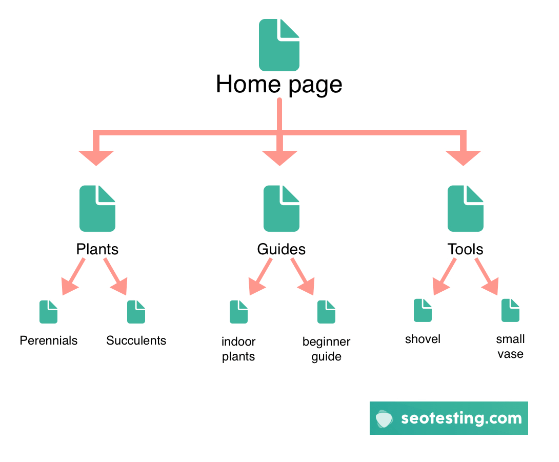
Linking from the page about succulents makes sense when we mention they are plants suited for small vases.
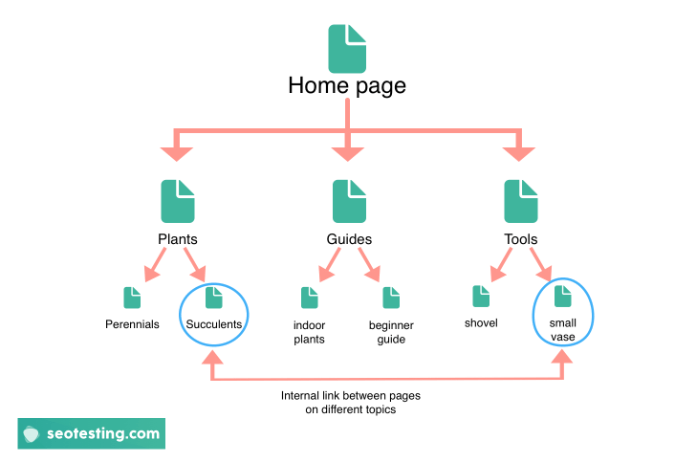
Silos also prevent link juice from flowing between different topics.
That’s why silos aren’t an optimal SEO strategy.
The solution would be to use a pyramid structure that allows a more natural internal linking structure.
Content hubs (aka topic clusters) will provide you the same benefits as silos without limiting internal links. Using content hubs (also referred to as the hub and spoke method) will allow you to write a large amount of content under one umbrella topics, plants for example, and link to different pieces of content within that same umbrella topic.
Internal Link best practices
Internal link best practices include a mix of strategy and common sense (i.e., doing it as naturally as possible).
Don’t over use
We’ve established that internal links are essential, and you should use them as much as possible.
But where does Google draw the line? How many internal links are too many?
The answer isn’t clear!
Google had a guide that recommended 100 links or fewer per page, but Matt Cutts said in 2013 to not worry about the number of links when the page adds value.
This means there isn’t a hard limit as Google wants people to use links as naturally as possible.
So, it’s no surprise when their employees say that you can “feel free to link naturally within your site”, even if it means having more than one internal link from the same page.
Google recommends you avoid “creating complex webs of navigation links” that link all the pages to each other.
Keep an eye on your Google Search Console to check if they hit you with a penalty.
Google can do it because they consider your pages to be spammy by having lots of links.
Too many links can also hurt user experience even without a Google penalty.
Recommendation: use as many links as you deem necessary without forcing them with unnatural placements.
Mix up anchor text
Anchor text is something Google pays attention “to understand what the page you’re linking to is about” and is something they use in their algorithm.
This means that exact-match anchor text can help your page rank better.
Emphasis on can because it’s not guaranteed that using a keyword as the anchor will work.
In fact, Google says that you should avoid “using excessively keyword-filled or lengthy anchor text just for search engines”.
Google is advising against keyword-stuffing, not against repeating the same anchor text on multiple pages.
But it’s still a good idea to use anchor variations or secondary keywords when possible.
Doing this might even help your page rank better for long-tail keywords.
In the garden website example, you can use the following variations for the indoor plants’ guide:
- Plants that thrive indoors.
- Learn more about indoor plants.
- Best plants to keep indoors.
Recommendation: use anchor variations across the site on some pages.
Add a related links section
Adding a related posts section at the end, or middle, of your content, is another way to increase the number of internal links.
These links have some SEO benefits, and top publications killing it on the SERP do it all the time.
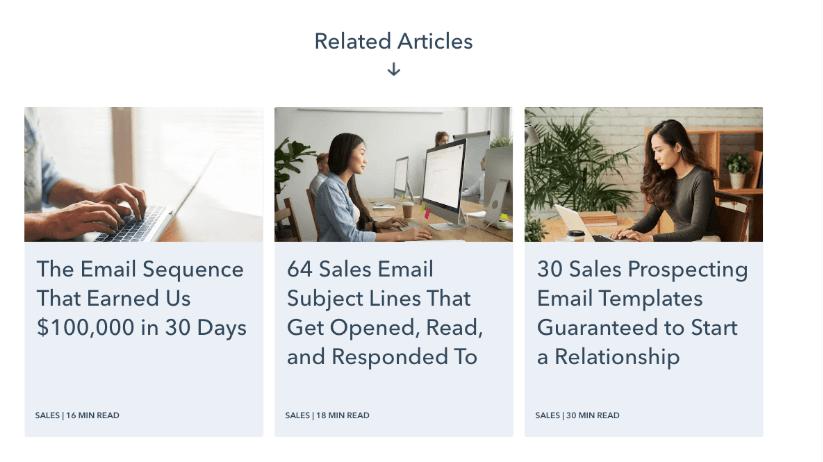
This section also benefits users when they reach the bottom of the page and have a curated list of related posts to what they just read.
On WordPress and most website builders, it’s relatively easy to add related posts, so there are little to no excuses to not do it.
Recommendation: add a related posts section at the end or in the middle of the main content.
Adding a “related posts” section or similar to your content is also a great way of adding internal links to your content that are related to your topic, without seeming unnatural if placed incorrectly within the page content itself.

How to audit your current internal link structure
Content audits are a must on SEO!
That’s why you should monitor your internal links to keep them in good shape.
But don’t worry if you find broken links or unnecessary redirects on your site.
Here’s how to fix them.
Fix broken internal links
Broken internal links are awful, but don’t despair as they are easy to find with Sitebulb and ScreamingFrog.
On Sitebulb, click the “Links” tab and look for “Internal Link Status”.
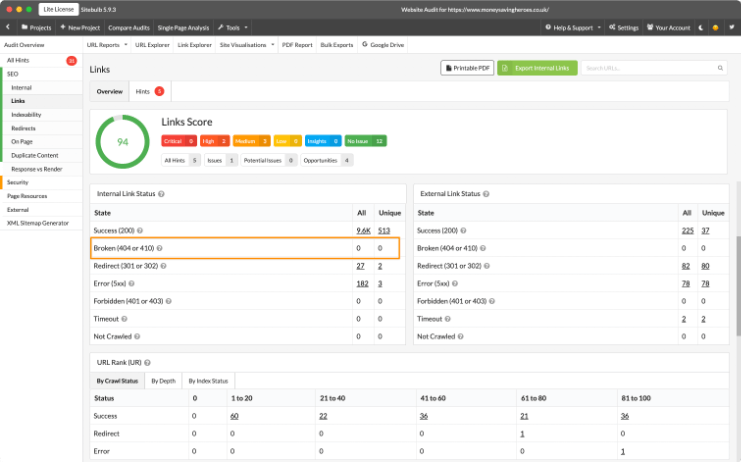
Here you can quickly find how many and which links are currently broken.
This website didn’t have broken internal links, which is something you should aim for!
On ScreamingFrog, the process is also straightforward:
- Run an audit.
- Go to “Internal” and look for the “Status code” column.
- Then click on each link that has a 4xx or 5xx code and find the referring pages.
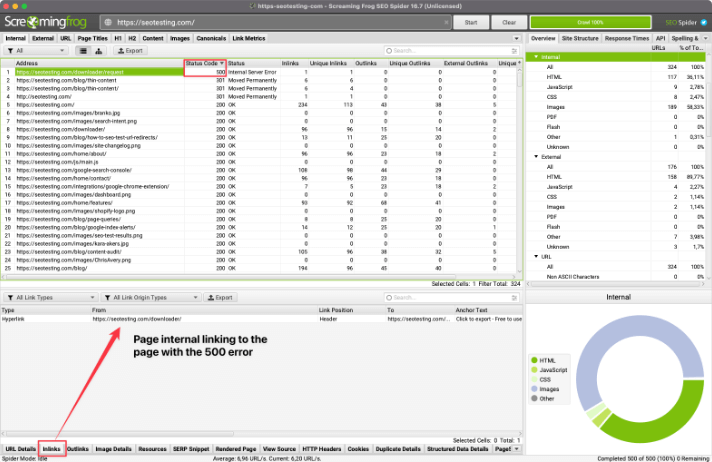
Fix needless redirects
Internal links shouldn’t go through redirects.
You can find instances of this on your site using Sitebulb on the “Links” tab.
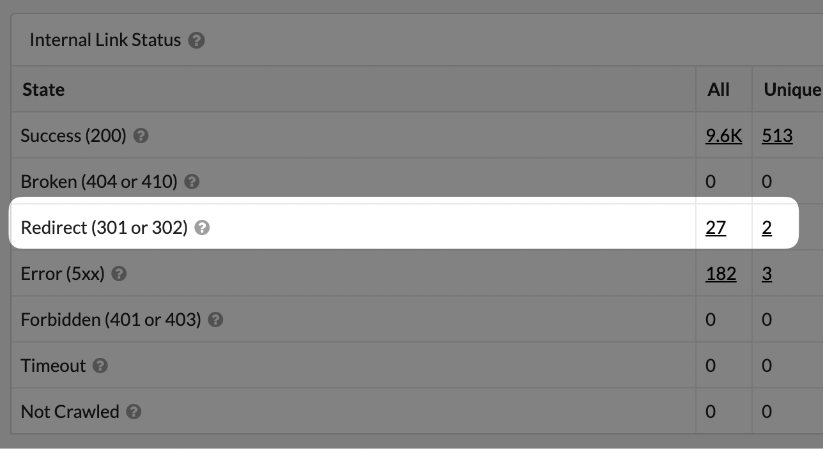
This website has 27 redirects on internal links. By clicking on the number, I can see where they are and fix them to get the desired 200 success code.
On ScreamingFrog, you can use the same report from above to find redirects.
The only difference is that you must look for “Status code” columns with codes 3xx.
Then select the affected URLs and see the referring pages at the bottom panel.
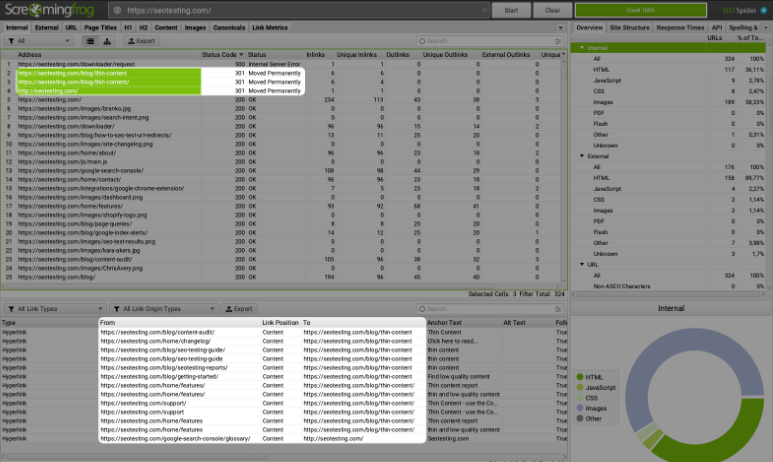
How to find internal linking opportunities
Now that you’re familiarized with everything related to internal links, you’ll learn how to find opportunities for internal links on your site.
Method 1 – Use Google search operators
Advanced search operators are a simple and free way to find internal link opportunities.
All you need is to use the following expression: site:[YourWebsite] “Your target keyword or phrase”.
This expression tells Google to only show results from your site (“site” operator) that mention the exact keyword (text inside the quotation marks).
This way, you can quickly look at the pages that are already indexed and contain the keyword.
Next, add the internal links from those pages to the page of the keyword you want to rank. This can be an existing page that is not ranking so well or a brand new page you are creating to target this keyword.
For example, if I was writing a guide on how to service a car. I could use an advanced search on Google, search for all the pages on my site that are related to car servicing, and link these pages to my new guide. This will give it a very helpful “boost” when it is first published and may help it get crawled, indexed and ranked faster.
Pro tip: Use keyword variations to get more results and mix up the anchor text used on internal links.
Method 2 – Sitebulb
There are several options to find internal link opportunities on Sitebulb.
Option 1: Go to the “Links” tab, and click on the “Incoming Internal Followed Links” chart.
In this case, I decided to look at the pages that have between 1 to 5 internal referring URLs.
You can also export this data into a CSV file for further exploration.
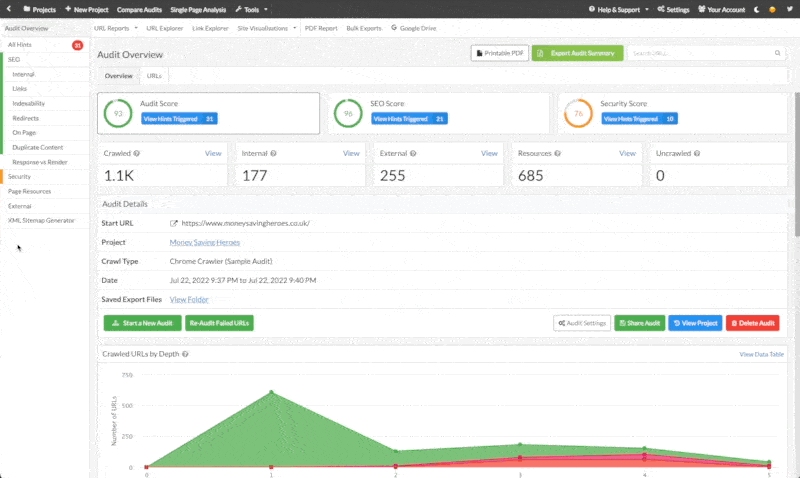
Option 2: Go to the hints and look for “Has only one followed internal linking URL”. This will show you a list of URLs with only one internal link pointing to them.
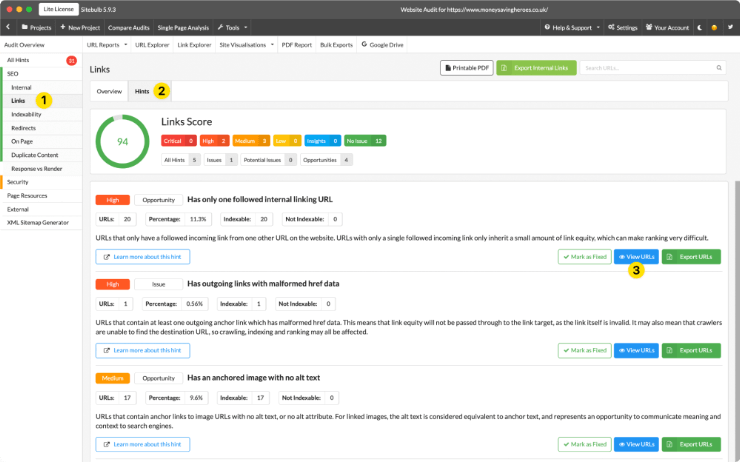
You can dig deeper by viewing the URL details of the incoming links.
This way, you can see the link type (column called location) and anchor text used.
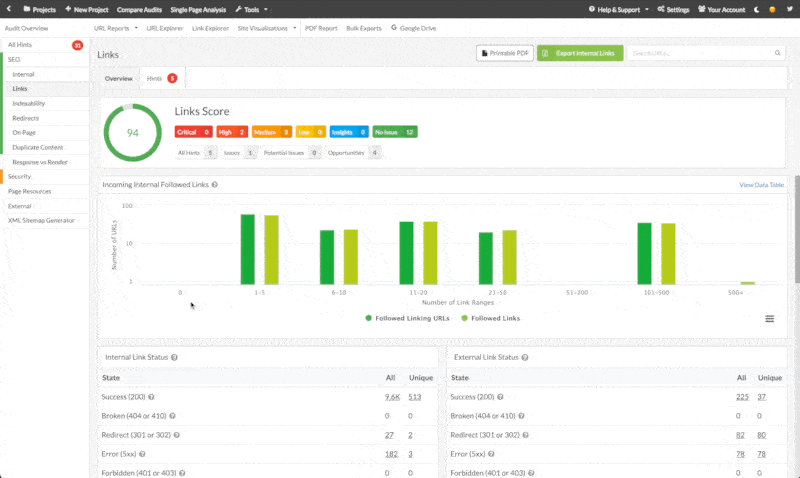
Method 3 -ScreamingFrog
Run a website audit on ScreamingFrog (steps 1 and 2), go to the “Internal” tab (step 3), and click export to get a CSV file (step 4).
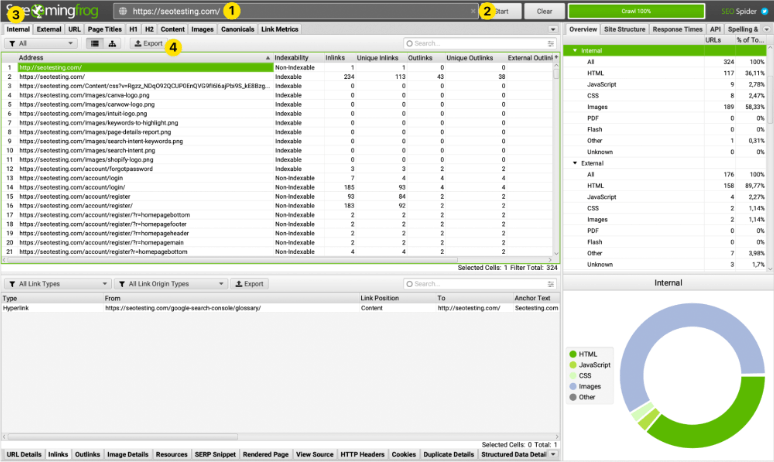
Now you have a file with a ton of columns, but you can keep only the:
- Address.
- Indexability.
- Inlinks.
- Unique Inlinks.
- Outlinks.
You are now ready to find pages in need of more internal links (called Inlinks in ScreamingFrog).
I used this to quickly find pages with less than 5 internal links that I can start working on and hopefully improve the rankings.
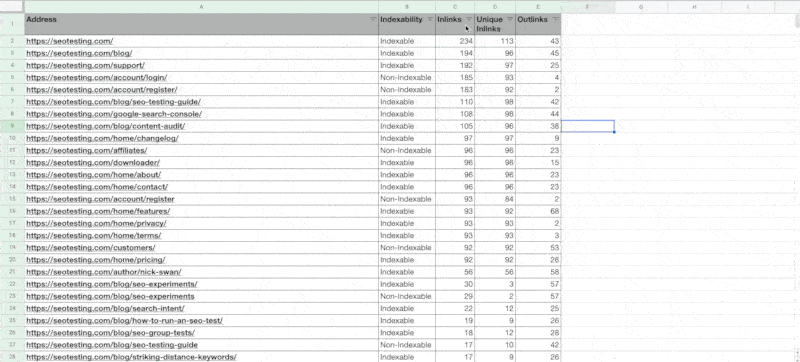
Hopefully this gives you all the information you need on internal links and how they are used for SEO. If you are interested in seeing how SEOTesting can help you with your SEO we have a 14-day free trial with no credit card required to sign-up.


